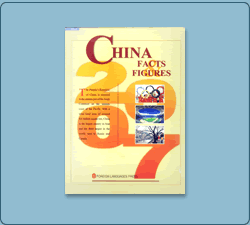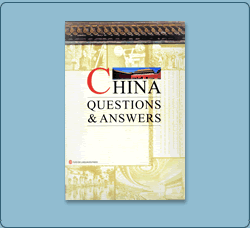|
New plane model on show at the sixth International Aviation and Aerospace Exposition, Zhuhai, October 2006
As the fifth country to develop and launch an independent man-made satellite and the third to master satellite recovery technology, China is in the world's front ranks in many important technological fields, including satellite recovery, carrying of multiple satellites on one rocket, rocket technology, and the launch, test and control of static-orbit satellites. Great achievements have been made in manufacturing and application of remote-sensing satellites and communications satellites, and in manned space experiments.
— Manned spacecraft. On October 15, 2003, "Shenzhou V," the first manned spacecraft developed independently by China, was successfully launched at the Jiuquan Satellite Launch Center. "Shenzhou V" sent China's first astronaut into space and returned safely, making China the world's third country to independently develop and deploy manned space flight technology. On October 12, 2005, the "Shenzhou VI" spacecraft was successfully launched. "Shenzhou VI" carried two men on a five-day flight compared with "Shenzhou V's" one-man, one-day voyage; building on the basis of the "Shenzhou V" flight. "Shenzhou VI" made breakthroughs in many basic astronautic technologies and it was the first time that scientific experiments were carried out in space with astronaut participation. "Shenzhou VII" is expected to be launched in 2008 and three astronauts will step out of the spaceship and complete spacewalk, rendezvous and docking in orbit.
— Man-made earth satellites. From the launch of its first man-made earth satellite "Dongfanghong No.1" in April 1970 to the end of 2006, China has successfully launched over 100 satellites. Man-made satellites developed by China itself fall into six categories: recoverable remote-sensing satellites; "Dongfanghong" communications; "Fengyun" meteorological satellites; "Shijian" scientific and technological testing satellites; "Ziyuan" earth resource satellites; and "Beidou" navigation satellites. "Fengyun No. 1" and "Fengyun No. 2" are on the World Meteorological Organization (WMO) list of international meteorological satellites.
— Carrier rockets. China has developed 12 models of the "Long March" carrier rockets series, and is able to launch low earth orbit, geostationary orbit, and sun-synchronous orbit satellites and spaceships. The successful launch rate is over 90 percent. By the end of 2006, "Long March" carrier rockets had made 91 launches; since October 1996, they have had 49 successful launches on the run. China's exclusively home-developed Jiuquan, Xichang and Taiyuan satellite-launch centers are internationally recognized today.
|





